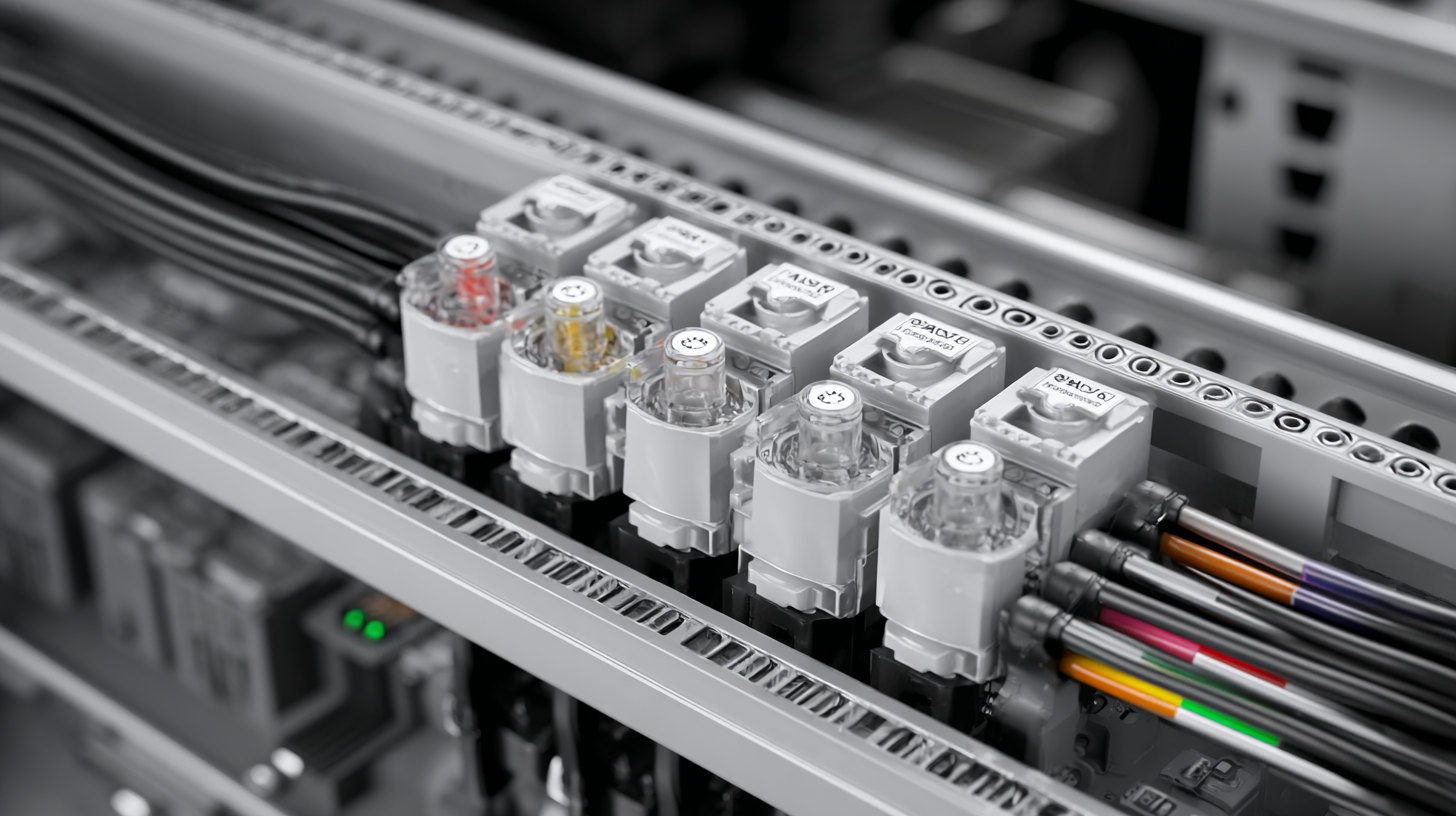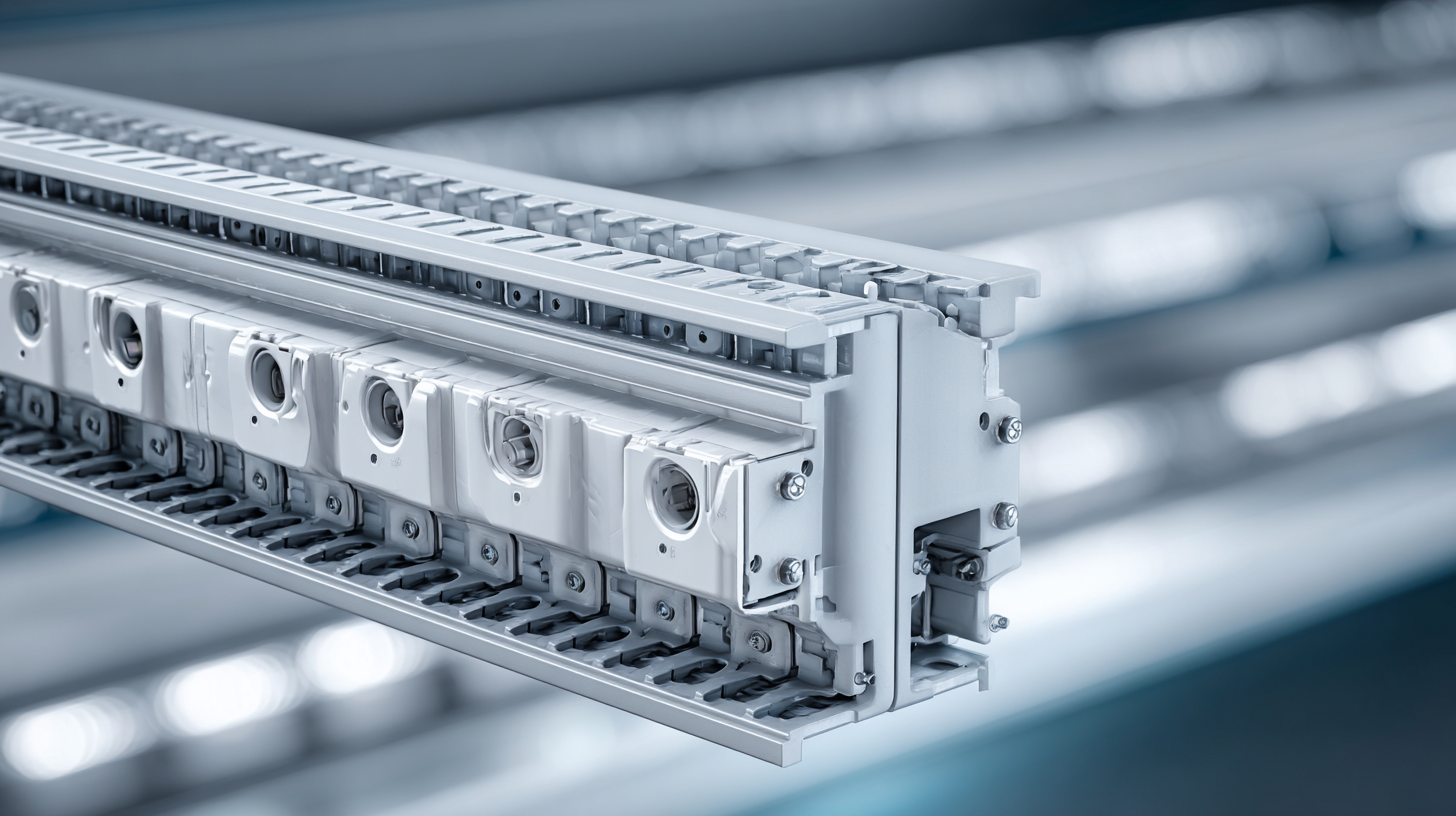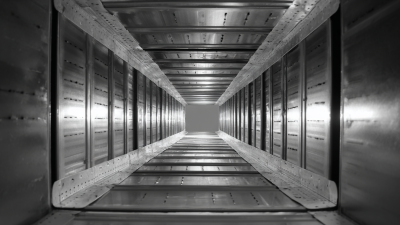Exploring the Advantages of AC Trunking for Modern Electrical Systems
 As modern electrical systems evolve, the integration of advanced solutions becomes critical for efficiency and safety. AC trunking, a system designed for the easy distribution of power and data, offers numerous advantages that cater to contemporary demands. According to the recent "Global Electrical Trunking Market Trends Report", the market for electrical trunking systems is projected to grow at a CAGR of 6.3% from 2023 to 2030, highlighting the rising adoption of AC trunking solutions across various sectors. In addition, a study by the International Energy Agency indicates that AC trunking can significantly reduce energy losses by up to 15% compared to traditional wiring methods. This innovation not only enhances the performance of electrical infrastructures but also aligns with sustainability goals by optimizing resource usage. This exploration delves into the key benefits of AC trunking, shedding light on its pivotal role in shaping the future of electrical systems.
As modern electrical systems evolve, the integration of advanced solutions becomes critical for efficiency and safety. AC trunking, a system designed for the easy distribution of power and data, offers numerous advantages that cater to contemporary demands. According to the recent "Global Electrical Trunking Market Trends Report", the market for electrical trunking systems is projected to grow at a CAGR of 6.3% from 2023 to 2030, highlighting the rising adoption of AC trunking solutions across various sectors. In addition, a study by the International Energy Agency indicates that AC trunking can significantly reduce energy losses by up to 15% compared to traditional wiring methods. This innovation not only enhances the performance of electrical infrastructures but also aligns with sustainability goals by optimizing resource usage. This exploration delves into the key benefits of AC trunking, shedding light on its pivotal role in shaping the future of electrical systems.
Benefits of AC Trunking in Enhancing Electrical Efficiency and Safety
The implementation of AC trunking systems has become increasingly vital in modern electrical infrastructure due to its numerous advantages in enhancing efficiency and safety. One of the primary benefits is the reduction of energy losses that occur during electricity transmission. AC trunking allows for optimized pathways for electrical flow, minimizing resistance and ensuring that more energy reaches its destination effectively. This efficiency not only leads to lower energy costs but also contributes to a more sustainable energy system.
Additionally, AC trunking systems enhance safety in electrical installations by reducing the risk of overheating and electrical hazards. The design of trunking systems promotes better heat dissipation, which is crucial for preventing fire risks associated with conventional wiring methods. Furthermore, these systems are often constructed with high-quality, durable materials that provide protection against environmental factors and mechanical damage. As a result, AC trunking systems not only foster a more reliable electrical distribution network but also significantly enhance the safety standards within commercial and industrial facilities.
Comparative Analysis: AC Trunking vs. Traditional Wiring Systems in Modern Applications
 AC trunking systems are emerging as a modern solution in electrical installations, offering various benefits over traditional wiring systems. The comparative analysis highlights that AC trunking provides enhanced flexibility in design and installation, allowing for easier modifications and expansions in existing systems. Unlike conventional wiring, which can be cumbersome and time-consuming to alter, AC trunking systems can be adjusted more readily to accommodate changing electrical demands. This adaptability is especially beneficial in dynamic environments like commercial buildings where layouts may frequently change.
AC trunking systems are emerging as a modern solution in electrical installations, offering various benefits over traditional wiring systems. The comparative analysis highlights that AC trunking provides enhanced flexibility in design and installation, allowing for easier modifications and expansions in existing systems. Unlike conventional wiring, which can be cumbersome and time-consuming to alter, AC trunking systems can be adjusted more readily to accommodate changing electrical demands. This adaptability is especially beneficial in dynamic environments like commercial buildings where layouts may frequently change.
Performance-wise, AC trunking demonstrates superior electrical transport properties, resulting in reduced energy losses compared to traditional wiring methods. Additionally, its increased safety features, such as reduced risk of overheating and easier accessibility for maintenance, make it an attractive option for modern applications. As electrical systems continue to evolve with advancements in technology and rising energy demands, the transition to AC trunking seems not only pragmatic but essential for future-proof installations. The integration of AC trunking aligns with the growing trend towards smarter and more efficient electrical solutions, positioning it as a favorable alternative in today's market.
Economic Advantages of Implementing AC Trunking in Large-Scale Projects
The implementation of AC trunking in large-scale projects offers significant economic advantages that can enhance overall project efficiency. One of the primary benefits is reduced installation costs. AC trunking systems facilitate faster and easier installation compared to traditional wiring methods, as they require less labor and fewer materials. This reduction in labor translates to lowered overhead costs, making it a more budget-friendly option for extensive electrical systems.
In addition to lower initial costs, AC trunking systems provide long-term savings through improved energy efficiency. They are designed to minimize energy losses and optimize power distribution, which can lead to substantial reductions in electricity bills over time. Furthermore, the scalability of AC trunking systems allows for easy upgrades or expansions without the need for extensive rewiring, ensuring that projects remain cost-effective even as demands change. By investing in AC trunking, large-scale projects can achieve a balance of upfront savings and long-term financial benefits.

Impact of AC Trunking on Reducing Installation Time and Labor Costs
AC trunking systems have emerged as a game-changer in modern electrical installations, significantly impacting both installation time and labor costs. According to a recent report by the Global Electrical Industry Association, integrating AC trunking can reduce installation times by up to 30%. This efficiency stems from the pre-fabricated nature of trunking components, which allows for quicker assembly and reduces the need for extensive on-site modifications.
By minimizing the cutting and fitting processes traditionally required, teams can complete projects faster without compromising quality.
Additionally, labor costs can see substantial reductions, with estimates suggesting savings of between 20% to 25% when switching from conventional wiring methods to AC trunking. The reduced complexity of installation not only decreases the amount of time electricians need to spend on-site but also allows teams to allocate their workforce more effectively, undertaking multiple projects simultaneously.
As businesses strive to improve their bottom lines, the adoption of AC trunking offers a strategic advantage, making installations more cost-effective and efficient, while delivering robust electrical solutions tailored for modern requirements.
Environmental Sustainability: AC Trunking's Role in Meeting Energy Regulations and Standards
As energy regulations become increasingly stringent, the importance of
sustainable electrical solutions cannot be overstated.
AC trunking systems, designed to distribute power efficiently, play a pivotal role in meeting these benchmarks.
According to the International Energy Agency (IEA), buildings account for roughly
40% of global energy consumption, which underscores the necessity for systems that can minimize energy waste.
By integrating AC trunking, organizations can optimize their electrical layouts, significantly reducing energy losses associated with conventional wiring methods.
One way to enhance the sustainability of your electrical installations is by utilizing
energy-efficient components
within the AC trunking system. For instance, modern trunking solutions are often equipped with advanced sensors that
can monitor and adjust energy usage in real time, aligning with regulatory standards. Additionally, a report from the
U.S. Department of Energy (DOE) highlighted that upgrading electrical infrastructure with smarter technologies can reduce
energy consumption by up to 20%.
Tips: When selecting an AC trunking system, consider those that maximize airflow and minimize resistance.
Moreover, incorporating renewable energy sources, such as solar power, into your electrical framework can further assist
in complying with evolving environmental regulations while promoting a greener future.

